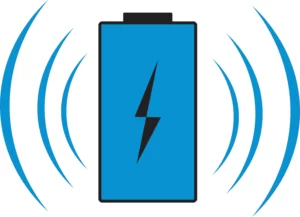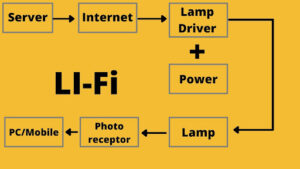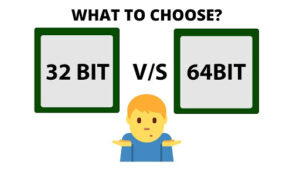Lithium-Ion V / S
Lithium Polymer
Both
Lithium-Ion and Lithium Polymer battery technologies have been in the market
for a long time. However, when buying a phone, we keep thinking about this
issue. This is not limited to phones only. Even with the purchase of
POWER-BANK, we cannot understand what battery technology we need. Lithium-Ion
and Lithium Polymer are the two battery technologies that make sense in their
place. We just have to find out what is best for us. So before choosing the right
battery, we need to know the difference between the two batteries. Below are
the differences between the two Lithium-Ion and Lithium Polymer battery
technologies.
Lithium-Ion and Lithium Polymer battery technologies have been in the market
for a long time. However, when buying a phone, we keep thinking about this
issue. This is not limited to phones only. Even with the purchase of
POWER-BANK, we cannot understand what battery technology we need. Lithium-Ion
and Lithium Polymer are the two battery technologies that make sense in their
place. We just have to find out what is best for us. So before choosing the right
battery, we need to know the difference between the two batteries. Below are
the differences between the two Lithium-Ion and Lithium Polymer battery
technologies.
|
Lithium-Ion
|
Lithium Polymer
|
|
(i)
Lithium-Ion Battery Technology is a relatively old technology. |
(i)
Lithium polymer Battery Technology is a relatively new technology. |
|
(ii) Using
Lithium-Ion battery technology, we can make a battery of a certain size. Because the electrolyte is used to make batteries here. For example – cylindrical or rectangular. |
(ii) Using lithium Polymer battery technology, we can manufacture batteries of any size.
This is because gels are used instead of electrolytes. For this reason, Lithium-Ion battery technology is used in electronics that have problems using a Lithium-Ion battery. |
|
(iii) The lithium-Ion battery has a high energy density.
|
(iii) The density of energy in the lithium polymer battery is very low.
|
|
(iv) The lithium-Ion battery is relatively heavy.
|
(iv) A Lithium Polymer battery is relatively light. For this reason, lithium polymer battery technology is used where the weight of the electronics component is required low.
|
|
(v) The lithium-Ion battery slowly discharges. That means its output power is less.
|
(v)
Lithium Polymer batteries may discharge very quickly. That means its output power is higher. |
|
(vi) The lithium-Ion battery has an overcharging issue. So wherever Lithium-Ion batteries are used, charging protection circuits must be fitted.
|
(vi) A Lithium Polymer battery does not cause an overcharging problem. Therefore,
there is no need to use the charging protection circuit on the Lithium Polymer battery. But keeping in mind safety, all companies also use charging circuits in Lithium Polymer batteries. |
|
(vii) The Lithium-Ion battery technology is relatively outdated, making the battery much less expensive here.
|
(vii)
Lithium Polymer Battery technology is relatively new, so the cost of making batteries here is a bit higher. |
|
(viii) The lithium-Ion battery is quite hot when charging.
|
(vii)
Lithium Polymer battery does not heat when charging. |
|
(ix) The lithium-Ion battery is more likely to be short-circuited and blasted.
|
(ix) A Lithium Polymer battery is very unlikely to be short-circuited and blasted.
|
Lithium-ion and lithium
polymer batteries are most commonly used on mobile phones or any portable
device. And that’s where different misconceptions arise. So before that
misconception can be made, it should be known that even a battery containing
lithium-polymer or lithium-ion on a mobile phone will not have any effect on a
typical mobile user. Lithium-Ion battery technology is available on
some mobile phones and Lithium Polymer battery technology is seen on some other
mobile phones.
polymer batteries are most commonly used on mobile phones or any portable
device. And that’s where different misconceptions arise. So before that
misconception can be made, it should be known that even a battery containing
lithium-polymer or lithium-ion on a mobile phone will not have any effect on a
typical mobile user. Lithium-Ion battery technology is available on
some mobile phones and Lithium Polymer battery technology is seen on some other
mobile phones.
Since Lithium Polymer battery
technology is a little expensive, most premium phones use Lithium Polymer
battery technology. However, Lithium-Ion batteries are also used on phones
where Lithium Polymer batteries cannot be used. Lithium Polymer batteries are also
used in various DC-motorized toys or drones. Because there is a need for high
torque to operate the motor. And it’s only available from the Lithium Polymer
battery.
technology is a little expensive, most premium phones use Lithium Polymer
battery technology. However, Lithium-Ion batteries are also used on phones
where Lithium Polymer batteries cannot be used. Lithium Polymer batteries are also
used in various DC-motorized toys or drones. Because there is a need for high
torque to operate the motor. And it’s only available from the Lithium Polymer
battery.





Hi there to everybody, it’s my first go to see of this web site; this weblog consists of awesome and in fact good stuff for visitors. Hurrah, that’s what I was exploring for, what stuff! Existing here at this blog, thanks admin of this web site. You can also visit NDA0200 for more TotalMedtech related information and knowledge.
Wish we can write more informative blogs